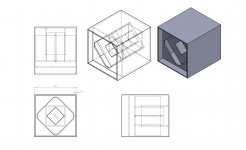Agreed, for a -10dB response to be flat (a "faithful" response) would take a 10 dB boost, but in the musical example shown, since the fundamental was 10 dB down, correspondingly less excursion is required, the Othhorn should do fine, the Gjallerhorn's response would be more than needed.Hi Art,
"...the fundamentals around 25 Hz are down about 10 dB from the first harmonics, Josh Ricci's Othhorn could reproduce that faithfully."
The Othhorn is down about 10dB @ 25Hz, so even this very fine TH would require a 10dB boost to reproduce 25Hz content accurately. It may well have enough reserve in the excursion to do that as long as the incoming signal in that range is 10dB down from the rest of the music, but that'll take some investigating.
It may well take something like the Gjallerhorn (which will get close to 20Hz).
Regards,
Most of the music I work with has few fundamentals below the low B (32 Hz) so even though I EQ my 37 Hz Fb TH flat to around 30 Hz, they don't run out of juice with (what I call) musical content.
If the "music" consisted of sine waves of equal amplitude down that low, it would be a different story
Fortunately, I don't work for anybody requiring 130 dB at 25 Hz..
Art
did some more testing today with the symetric model.
note ,it was all done in to little time.(no pics yet)
first we want to get a inpedance measurement.
i found it was verry hard to get a good curve with the speaker in the box.
with the speaker out the box we get a nice smooth curve.
no sure how to get smooth curve measuring in the box.
but the measurements show the first peak has a lower amplitude then the sim,next lowest dip was about the same as the sim,the middle peak was also about the same as the sim ,then the high peak was about 6-7hz higher.
then we put a signal on the beyma g400 , it didnt preform that well to be honest.
after that we put a 18sound 18lw1400 in it,it was much better ,considering the box wasnt moddeled for it.
then for comparison we put a eaw sb 850 next to it,feeding the same signal.
amp was a qsc pl 1.8 ,28 hz hpf 48db/oct
the th horn(8ohm) out preformed the sb 850 double 18(4ohm) a bit on the low end.
they are aprox the same volume.
i think the symetric moddel is good enough to explore some more.
next testing after 2 weeks again.
grtz erik
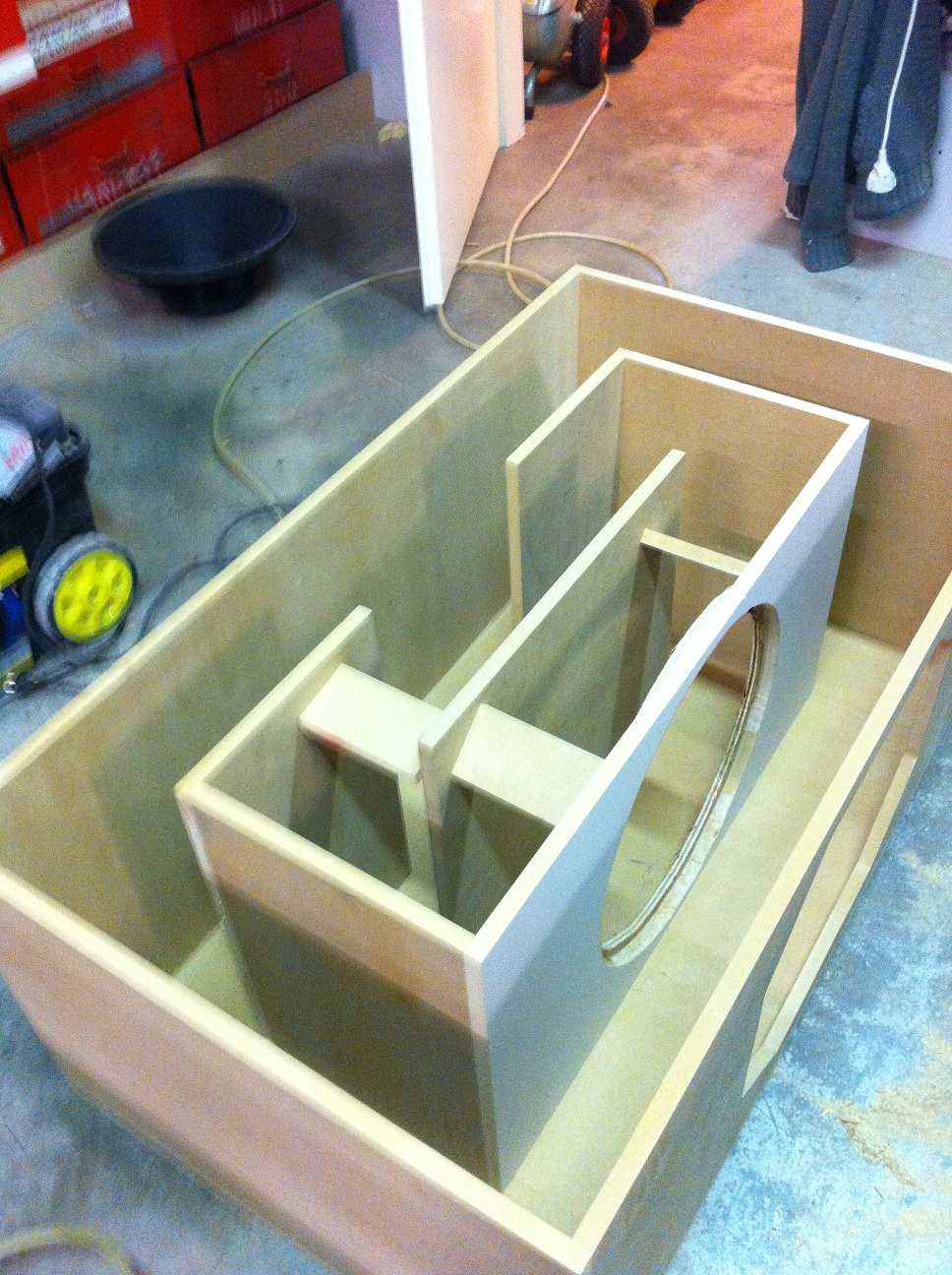
note ,it was all done in to little time.(no pics yet)
first we want to get a inpedance measurement.
i found it was verry hard to get a good curve with the speaker in the box.
with the speaker out the box we get a nice smooth curve.
no sure how to get smooth curve measuring in the box.
but the measurements show the first peak has a lower amplitude then the sim,next lowest dip was about the same as the sim,the middle peak was also about the same as the sim ,then the high peak was about 6-7hz higher.
then we put a signal on the beyma g400 , it didnt preform that well to be honest.
after that we put a 18sound 18lw1400 in it,it was much better ,considering the box wasnt moddeled for it.
then for comparison we put a eaw sb 850 next to it,feeding the same signal.
amp was a qsc pl 1.8 ,28 hz hpf 48db/oct
the th horn(8ohm) out preformed the sb 850 double 18(4ohm) a bit on the low end.
they are aprox the same volume.
i think the symetric moddel is good enough to explore some more.
next testing after 2 weeks again.
grtz erik
the measurements show the first peak has a lower amplitude then the sim
All of the peaks should be a little lower than the sim suggests. If they're a LOT lower, that suggests that the joints in the box, or between the driver and the baffle it's mounted to, aren't airtight.
tnx brian ill look in to that.All of the peaks should be a little lower than the sim suggests. If they're a LOT lower, that suggests that the joints in the box, or between the driver and the baffle it's mounted to, aren't airtight.
i stil need a good measurement(i use limp)
maybe i need to use a seperate amp to get a good measurement.
tnx brian ill look in to that.
i stil need a good measurement(i use limp)
maybe i need to use a seperate amp to get a good measurement.
Looking at that box again, I'd be tempted to add another panel between the panel right behind the driver to the rear of the enclosure, which would bisect the horn and add additional bracing right where it's likely needed.
tnx brianLooking at that box again, I'd be tempted to add another panel between the panel right behind the driver to the rear of the enclosure, which would bisect the horn and add additional bracing right where it's likely needed.
that was already in the planning for the next test.
also some extra bracing is to be added then.
and for securety ,i put some stuff on the joints.
speaker has some foam on it so that wil be ok.
note,this only a test box.
Last edited:
had some time yesterday,so i made a pannel behind the driver ,as brian sugested.
did not have time to test it.
ive also made a new interface for impedance measurement.this one works with an external amp.
next saturdy i wil do the testing.
and i had another brain fart
hi res flv
did not have time to test it.
ive also made a new interface for impedance measurement.this one works with an external amp.
next saturdy i wil do the testing.
and i had another brain fart
hi res flv
Last edited:
i had that in mind ,when i came up with this.Hi Eric,
Very nice indeed, Eric.
Such construction will give the optimum spread of the forces over the total cone surface, at both sides of the cone
there are some things to think about.
path lenght is different (horizontal and vertical) vs path lengt diagonal.
20 to 25%.
this box is a bit to big(560 ltr)compared to the sim(355 ltr)
you could make varius shapes of mouths ,or just leave the whole front of, who knowsYou can extend the front to make it into one big mouth for maximum acoustic coupling when you stack them.
Played w/Hornresp a bit - veered from a straight pipe tho.
Is this worth it? Looks pretty good, considering the drivers' restrictions. Same LF, slightly bigger, higher sensitivity, better group delay(?), excursion peak approx same distance from Fs as Djim's mod. Sanity check, please (it's 5am here).
*Also, finished my latest dnb mix not too long ago. Figure a few of you might enjoy it on the road, exercising or just to have on your mp3 player and test your systemsHere's a few diff sites to stream from (not sure what your fave is):
Soundcloud
Mixcrate
Mixcloud
To skip the bs and just download it:
Here
You're welcome to share it w/friends as I'm not sellin the mix or anything (so they can test their systems, too, of course)
Hope you're doin amazing and had a great weekend!
Your mixes are TIGHT!
Hi Eric,
Instead of making tunnels in the length, going towards the back, you could make tunnels in the width (see picture). Maybe that gives you more control over each section in path....
Edit: To prevent confusing, the grey areas are open areas.
Instead of making tunnels in the length, going towards the back, you could make tunnels in the width (see picture). Maybe that gives you more control over each section in path....
An externally hosted image should be here but it was not working when we last tested it.
Edit: To prevent confusing, the grey areas are open areas.
Last edited:
Hi Eric,
Instead of making tunnels in the length, going towards the back, you could make tunnels in the width (see picture). Maybe that gives you more control over each section in path....
An externally hosted image should be here but it was not working when we last tested it.
Edit: To prevent confusing, the grey areas are open areas.
intresting option.

this wil be the next model im going to draw,when i feel like cad-ing again.
btw you have the same pathlengt differences (horizontal vs diagonal),as in my moddel,wich may or may not be a good thing.
but easyer to bild i think.
left horizontal/vertical path lenth vs right diagonal path lengt in my model.
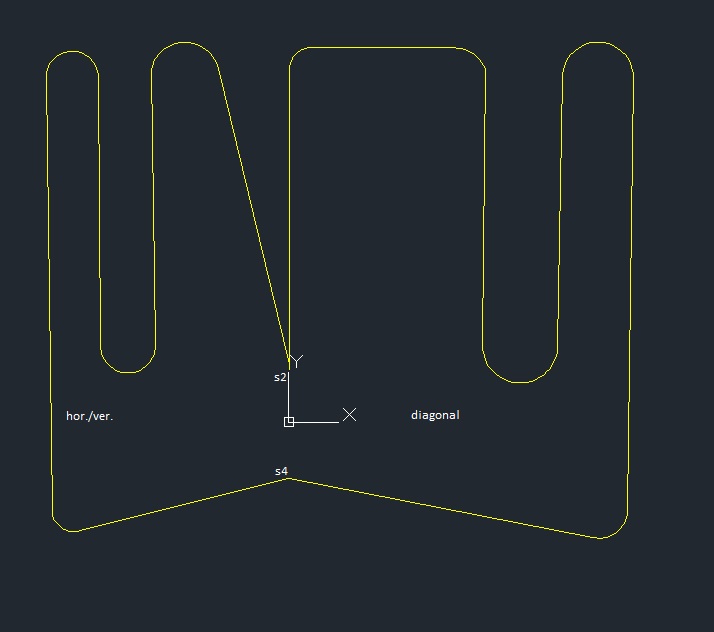
Hi Epa,
I see your problem. The diagonal and the horizontal/vertical lines together are forming the system. So use the average of both by calculating it with CAD. Just remember that HornResp and TH's work by responding to the Volume per location. They don't 'see' shapes.
The trick for such construction is you have to work with perfect square shapes.
Start with the driver panel (panel A) that is as big as the driver and build out from that point.
Panels A, B, 1, 2, 3 (and the red front panel) are all perfectly square.
The difficulty is to brace the middle section since the two internal panels are hovering.
The best construction can be made from corner to corner (see View Front, B).
I left out the front (red) panel in the front view.
So if you look through the driver cut-out you look at a cross-bracing.
The bracing from the middle section/box to the outside box should be braced in the centre of each panel.
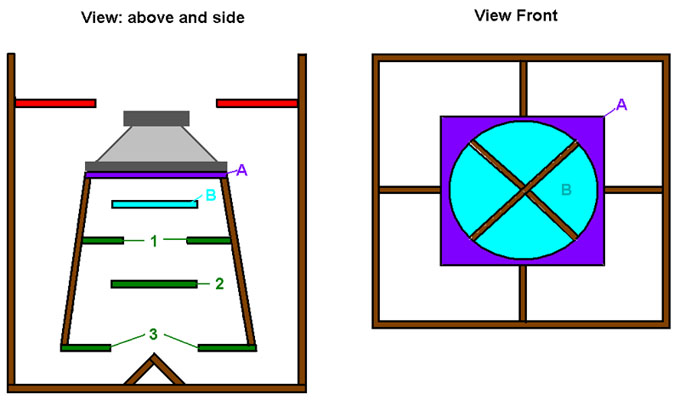
But since such construction needs very accurate cutting but you can simplify the layout by going symmetric (all panels have 90 degree cuts and are parallel positioned).

I see your problem. The diagonal and the horizontal/vertical lines together are forming the system. So use the average of both by calculating it with CAD. Just remember that HornResp and TH's work by responding to the Volume per location. They don't 'see' shapes.
The trick for such construction is you have to work with perfect square shapes.
Start with the driver panel (panel A) that is as big as the driver and build out from that point.
Panels A, B, 1, 2, 3 (and the red front panel) are all perfectly square.
The difficulty is to brace the middle section since the two internal panels are hovering.
The best construction can be made from corner to corner (see View Front, B).
I left out the front (red) panel in the front view.
So if you look through the driver cut-out you look at a cross-bracing.
The bracing from the middle section/box to the outside box should be braced in the centre of each panel.

But since such construction needs very accurate cutting but you can simplify the layout by going symmetric (all panels have 90 degree cuts and are parallel positioned).

Last edited:
another nice one xco1.
dont know if the volumes are close but it looks like it could be done that way,+ its much easyer construction.
@ jim been modeling a bit ,and came up with this.
the problem is the last part of the middle section (red)this area expands to rapidly.
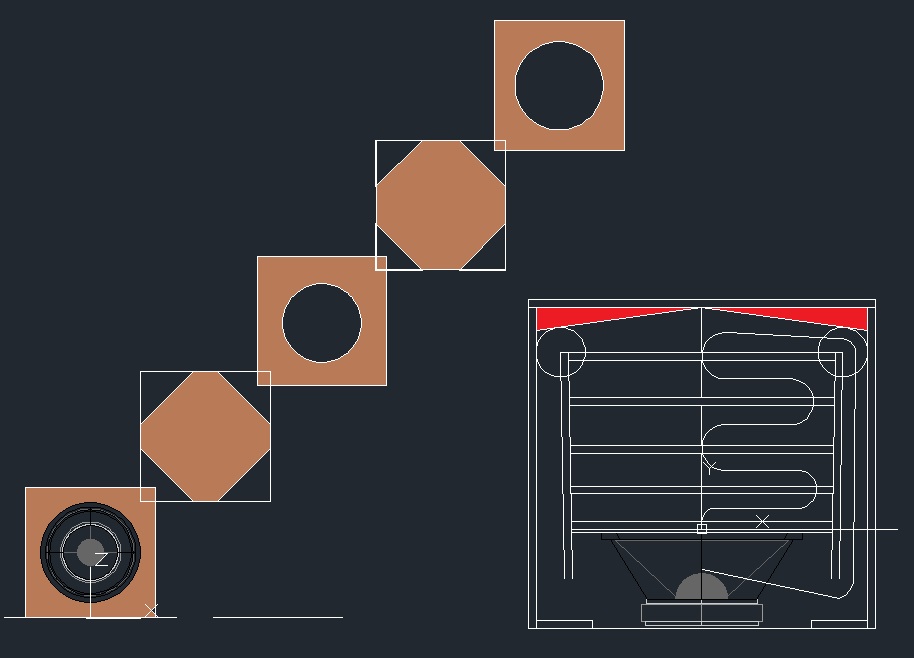
ofcourse you could go from conical to paralel there
dont know if the volumes are close but it looks like it could be done that way,+ its much easyer construction.

@ jim been modeling a bit ,and came up with this.
the problem is the last part of the middle section (red)this area expands to rapidly.

ofcourse you could go from conical to paralel there

Last edited:
Hi Eric,
If you work fully rectangular like Martin’s concept drawing of post#636 it is indeed more easy to build. If you build TH’s from 6 rectangular sections it will work up to at least its full wavelength.
For instance each straight rectangular section can have a maximum length of :
Minimum upper limit...............Maximum length per expanding section
140Hz .................................. 41cm
120Hz ...................................48cm
100Hz ...................................57cm
80Hz......................................72cm
It's not that they don't work above the upper limit but they wont follow the prediction any longer.
The extra volume in your drawing will not be a huge problem as long you use corner correction.
If you work fully rectangular like Martin’s concept drawing of post#636 it is indeed more easy to build. If you build TH’s from 6 rectangular sections it will work up to at least its full wavelength.
For instance each straight rectangular section can have a maximum length of :
Minimum upper limit...............Maximum length per expanding section
140Hz .................................. 41cm
120Hz ...................................48cm
100Hz ...................................57cm
80Hz......................................72cm
It's not that they don't work above the upper limit but they wont follow the prediction any longer.
The extra volume in your drawing will not be a huge problem as long you use corner correction.
Last edited:
- Home
- Loudspeakers
- Subwoofers
- C/E/X PA Flat to 30 (FT30) PA TH Awesomeness

